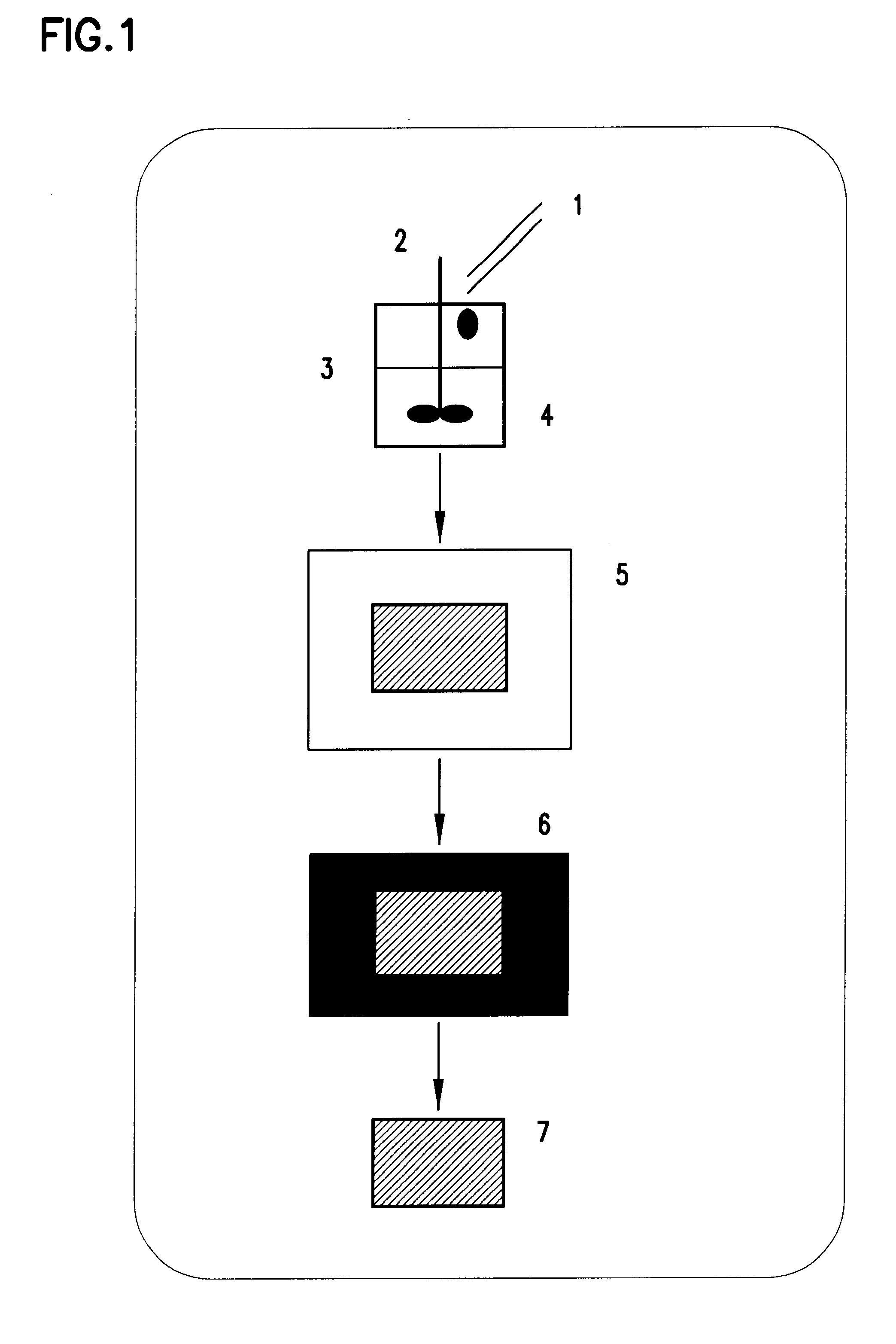Method of forming polysaccharide sponges for cell culture and transplantation
a cell culture and transplantation technology, applied in the field of cell culture and transplantation, can solve the problems of inability to prepare functional organ equivalents made up of multilayer cell aggregates, and inability to carry a very thin layer of cells
- Summary
- Abstract
- Description
- Claims
- Application Information
AI Technical Summary
Benefits of technology
Problems solved by technology
Method used
Image
Examples
example 2
Morphology of Alginate Sponges
The morphology of the alginate sponges was investigated by scanning electron microscopy (SEM, JEOL JSM-35CF). Samples of the various alginate sponges were mounted on aluminum stubs and coated with an ultrathin (100 .ANG.) layer of gold in a Polaron E 5100 coating apparatus. The parameters of the sponge microstructure were investigated by geometrical measurements on the SEM-micrographs. The pore length, width and wall thickness (i.e., the average distance between neighboring pores), were measured by a stereo microscope (Bausch & Lomb) equipped with an optical micrometer. The effective size of the pores was calculated, using the equation:
d=l.multidot.h
where l, h--are the average length and width of the pores, respectively. Wall thickness measurements were performed as this parameter characterizes the distance between the pores, and hence the microstructure of the sponges.
Initially, the shape of the sponges was determined by the dish in which the processin...
example 3
Mechanical Properties and the Pore Compressibility of the Alginate Sponges
The mechanical properties of alginate sponges were determined at 22.degree. C. (room temperature) by compressing the sample sponges at a constant deformation rate of 2 mm / min, using a standard test apparatus. This apparatus is illustrated schematically in FIG. 5 and comprises a load cell, a deformation cell, and indentor, and a table. The sample sponge is placed between the indentor and the table and is subjected to a load which is measured by the measuring apparatus to which the table is connected at its other end ("translation"). With such an apparatus, the load and deformation were monitored with high accuracy down to loads of 1 g and at deformations of less than 0.05 mm. In this apparatus, the diameter of the indentor (7 mnm) was usually smaller than that of the sample (sample sponges being usually about 15 mm), or greater when subjected to compression, and hence the influence of sample diameter variations...
example 4
Degradation of Alginate Sponges, in vitro
In order to determine the degradation of the alginate sponges of the present invention over a period of time, the sponges were incubated in a complete culture medium and samples were withdrawn at different time intervals for the purposes of assaying the concentration of soluble alginate by way of a calorimetric assay. This assay was based on the meta-chromatic change induced by alginate binding to the dye, 1,9-dimethyl methylene blue (DMMB) (see Halle et al., 1993).
In this assay, the alginate sponges were cultured in a standard culture medium being the standard complete medium usually used for culturing cells such as fibroblasts and hepatocytes, at 37.degree. C. The cultured sponges were of two kinds, the one kind having been seeded with cells and the other being without any cells. Results of this assay show that alginate sponges, with or without seeded cells, cultured in culture medium at 37.degree. C. maintained their physical stability for...
PUM
 Login to View More
Login to View More Abstract
Description
Claims
Application Information
 Login to View More
Login to View More - R&D
- Intellectual Property
- Life Sciences
- Materials
- Tech Scout
- Unparalleled Data Quality
- Higher Quality Content
- 60% Fewer Hallucinations
Browse by: Latest US Patents, China's latest patents, Technical Efficacy Thesaurus, Application Domain, Technology Topic, Popular Technical Reports.
© 2025 PatSnap. All rights reserved.Legal|Privacy policy|Modern Slavery Act Transparency Statement|Sitemap|About US| Contact US: help@patsnap.com


